Business News Daily provides resources, advice and product reviews to drive business growth. Our mission is to equip business owners with the knowledge and confidence to make informed decisions. As part of that, we recommend products and services for their success.
We collaborate with business-to-business vendors, connecting them with potential buyers. In some cases, we earn commissions when sales are made through our referrals. These financial relationships support our content but do not dictate our recommendations. Our editorial team independently evaluates products based on thousands of hours of research. We are committed to providing trustworthy advice for businesses. Learn more about our full process and see who our partners are here.
Why Word of Mouth Trumps Traditional Advertising
Why Word of Mouth Trumps Traditional Advertising

Table of Contents
When it comes to swaying consumers, nothing beats word-of-mouth advertising. When people hear recommendations from their friends and family, they’re more likely to follow up than when they simply come across an advertisement. That level of trust is something that simply cannot be bought in a paid ad, so learning to encourage your satisfied customers to spread the word can be a powerful tool for any small business.
Word of mouth recommendations outperform advertising
The power of word-of-mouth advertising was made evident in a well-known Nielsen survey, which found that 92 percent of people trusted recommendations from friends and family above all other forms of advertising when making a purchasing decision.
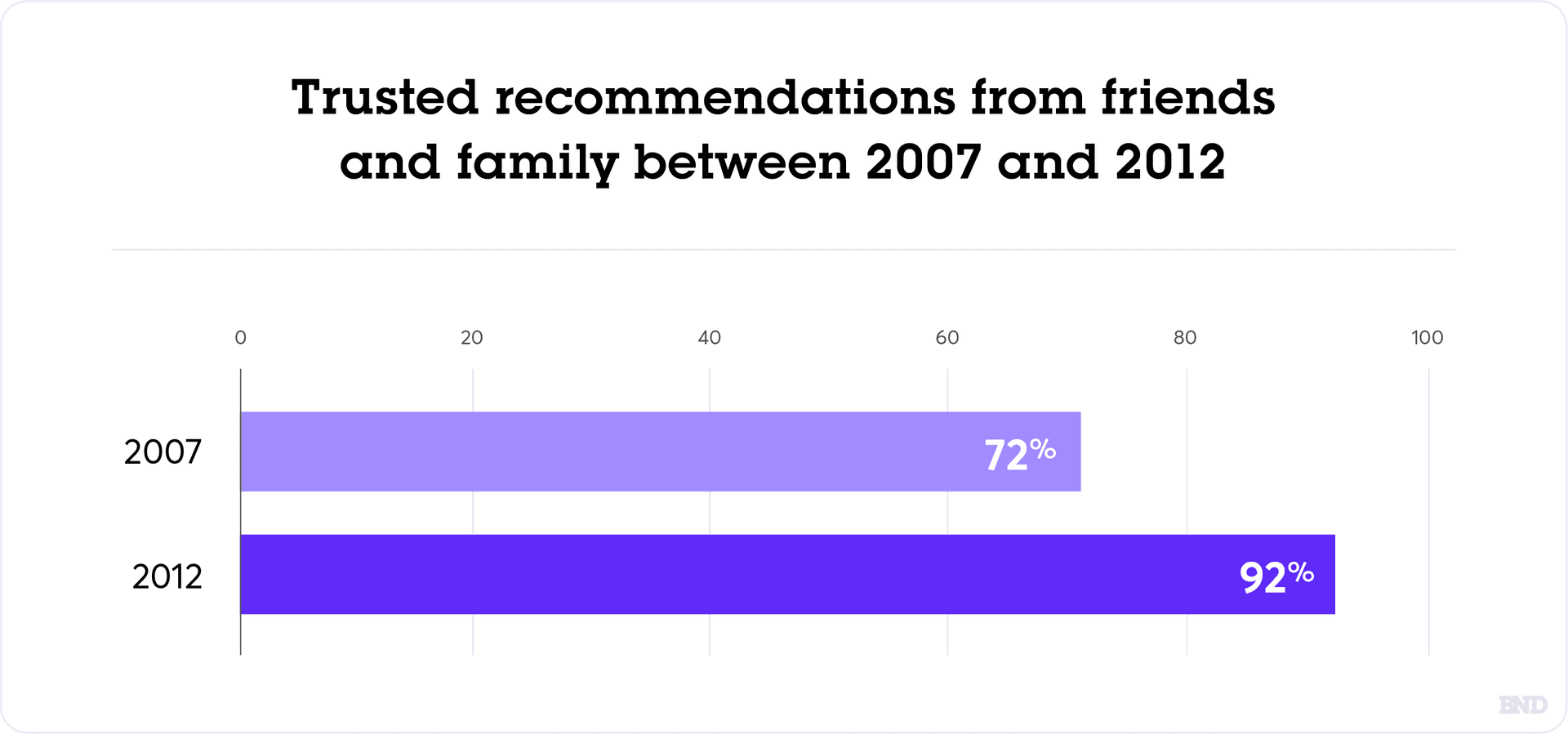
Further, people tend to distrust ads. According to the study, fewer than half of all people still found paid traditional television, magazine and newspaper ads credible.
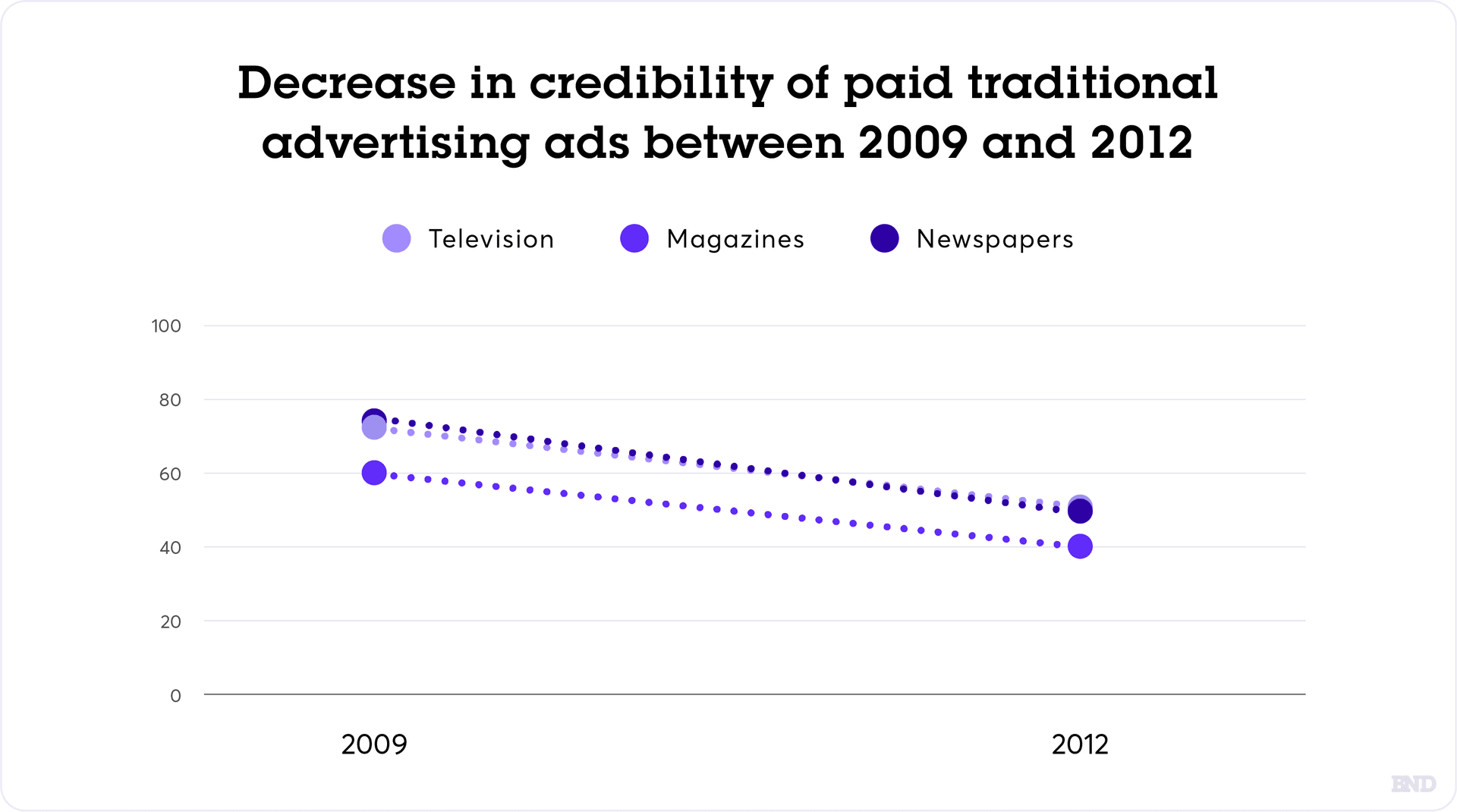
As for online customer reviews, 70 percent of people professed trust in them.
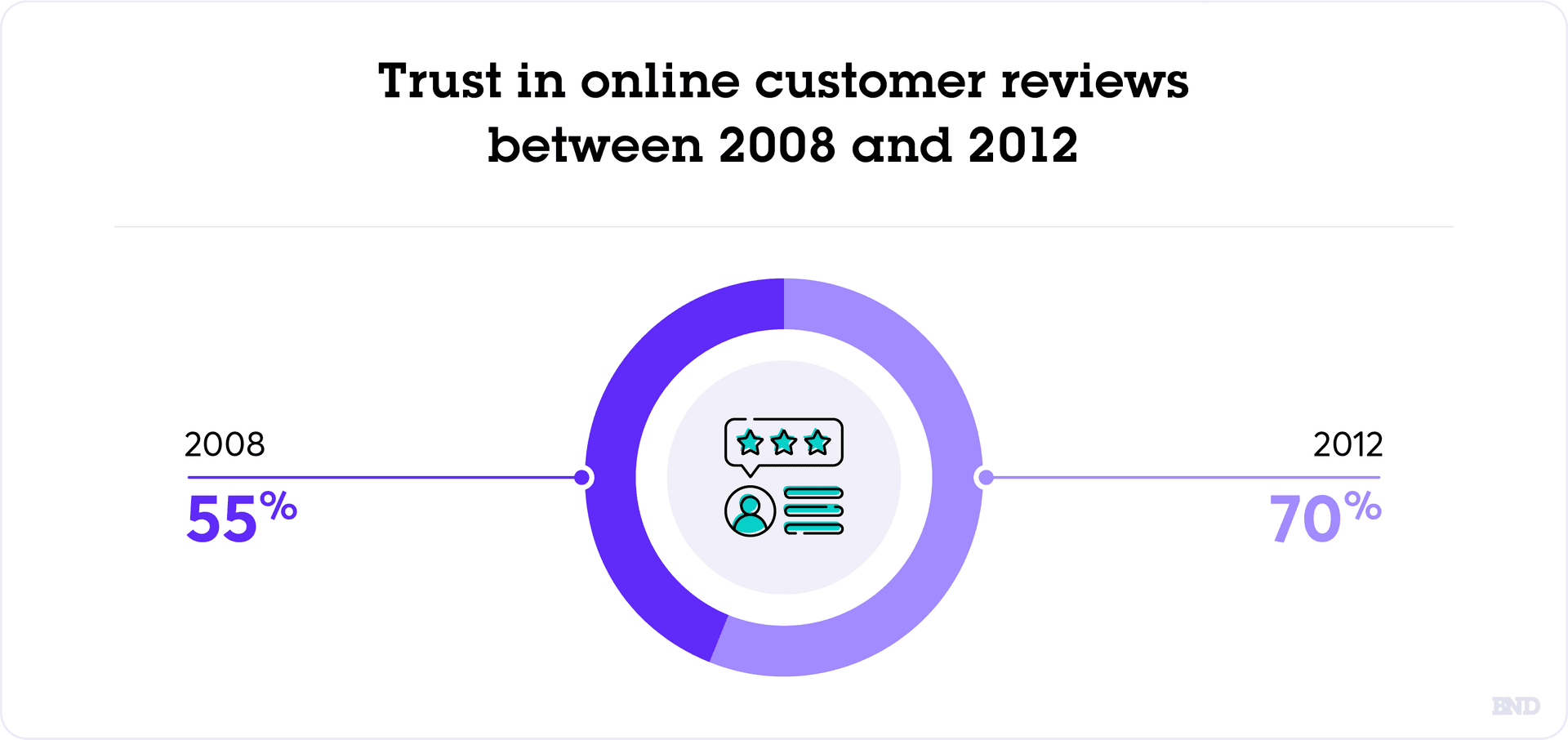
“While brand marketers increasingly seek to deploy more effective advertising strategies, Nielsen’s survey shows that the continued proliferation of media messages may be impacting how well they resonate with their intended audiences on various platforms,” said Randall Beard, former global head of advertiser solutions at Nielsen, at the time of the survey’s release.
“Although television advertising will remain a primary way marketers connect with audiences due to its unmatched reach compared to other media, consumers around the world continue to see recommendations from friends and online consumer opinions as by far the most credible. As a result, successful brand advertisers will seek ways to better connect with consumers and leverage their goodwill in the form of consumer feedback and experiences.” [Read related article: Consumers Have Humanlike Relationships With Brands]
Online advertisements were a growing medium when the study was released. The prevalence of consumers who found online banner ads credible grew from 26 percent five years prior to 33 percent when the study was released.
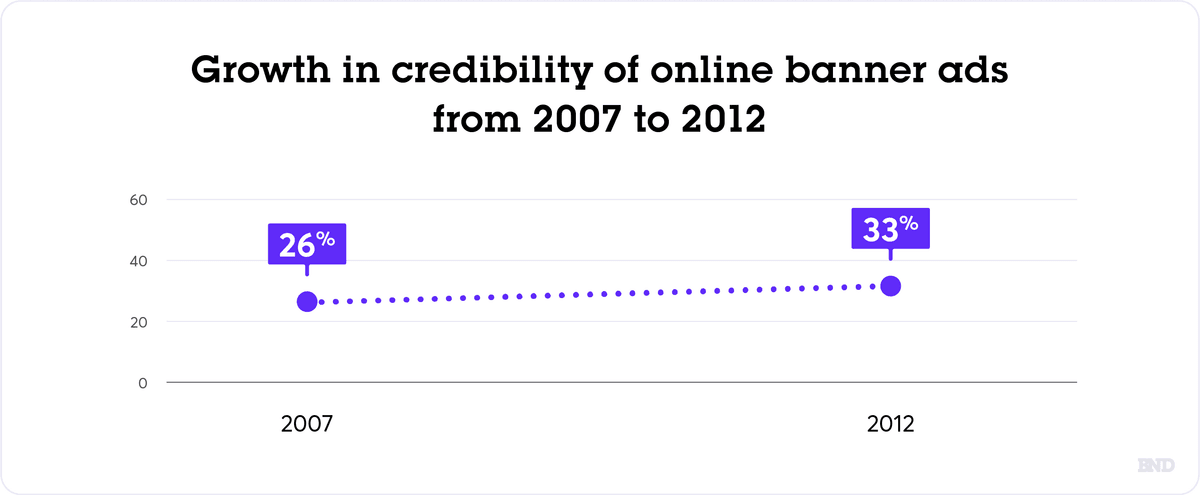
Additionally, nearly 40 percent of people trusted ads viewed in search engine results and on social networks.
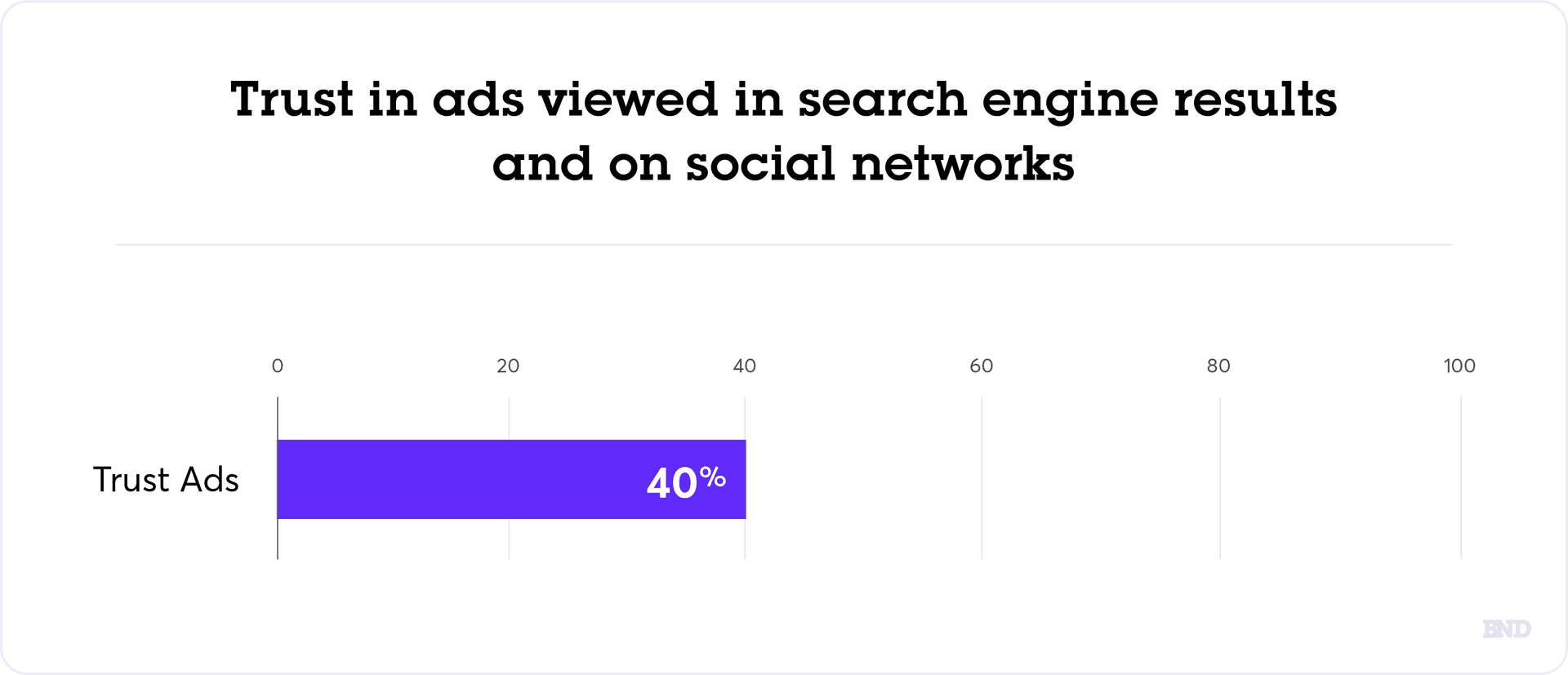
Consumer trust in ads from mobile devices, such as tablets and smartphones, as well as text message ads, showed growth in the survey too.
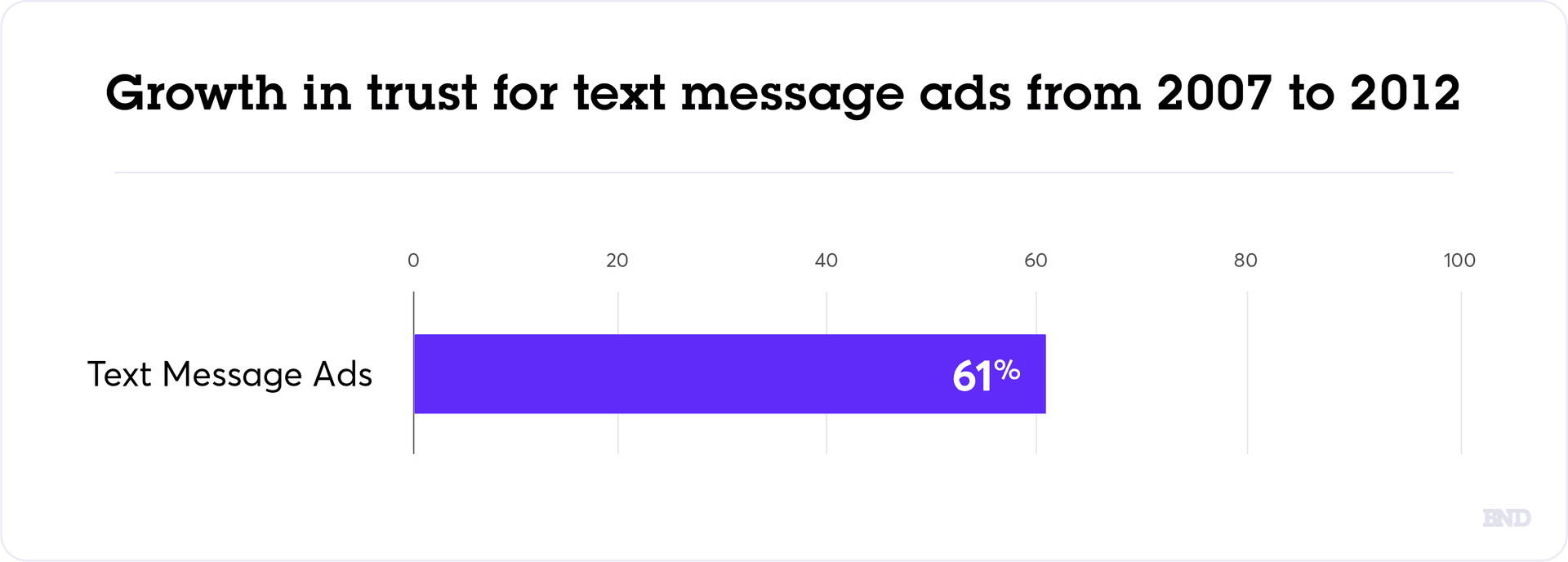
Creative ad formats
More creative forms of ads were also starting to grow in credibility at the time of Nielsen’s study. According to the research, nearly 60 percent of consumers responded to advertising on company websites, while 50 percent of consumers responded to company emails. Surprisingly, slightly more than 40 percent of people were swayed when seeing product placements in television shows and movies.
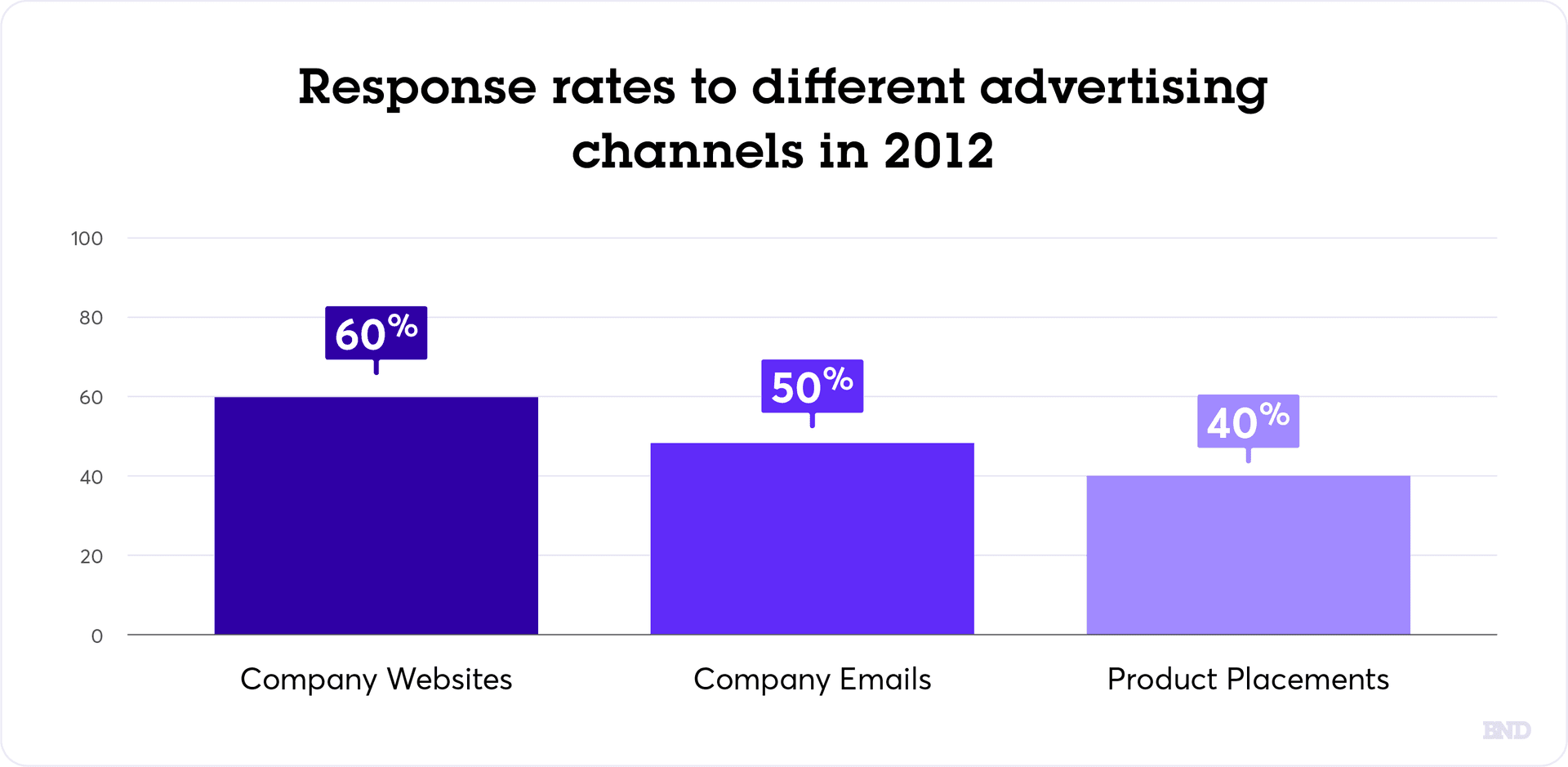
“The growth in trust for online search and display ads over the past four years should give marketers increased confidence in putting more of their ad dollars into this medium,” Beard said. “Many companies are already increasing their paid advertising activity on social networking sites, in part due to the high level of trust consumers place in friends’ recommendations and online opinions. Brands should be watching this emerging ad channel closely as it continues to grow.”
The information in the Nielsen Global Trust in Advertising survey was based on the responses and behaviors of 28,000 people from 56 countries.
Word-of-mouth advertising statistics
A blog that online visibility management company Semrush published provides more recent word-of-mouth advertising data. Among the blog’s 49 statistics, the following 10 stand out most prominently:
1. Ninety percent of customers will choose a product that comes with a person’s recommendation (even if they don’t know that person) over one lacking this endorsement.
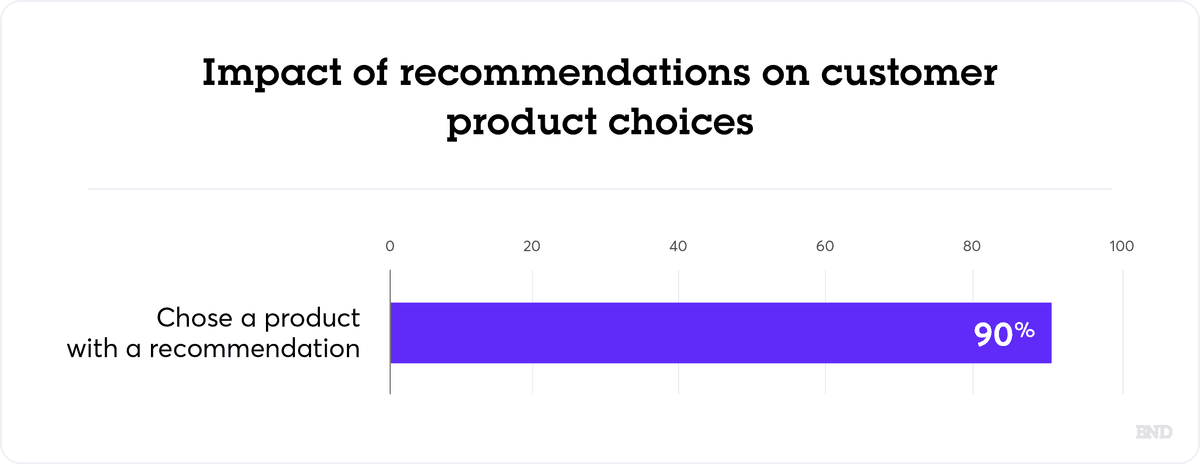
2. Over 1 in 4 customers will completely avoid a small business about which someone they know shares a negative story.
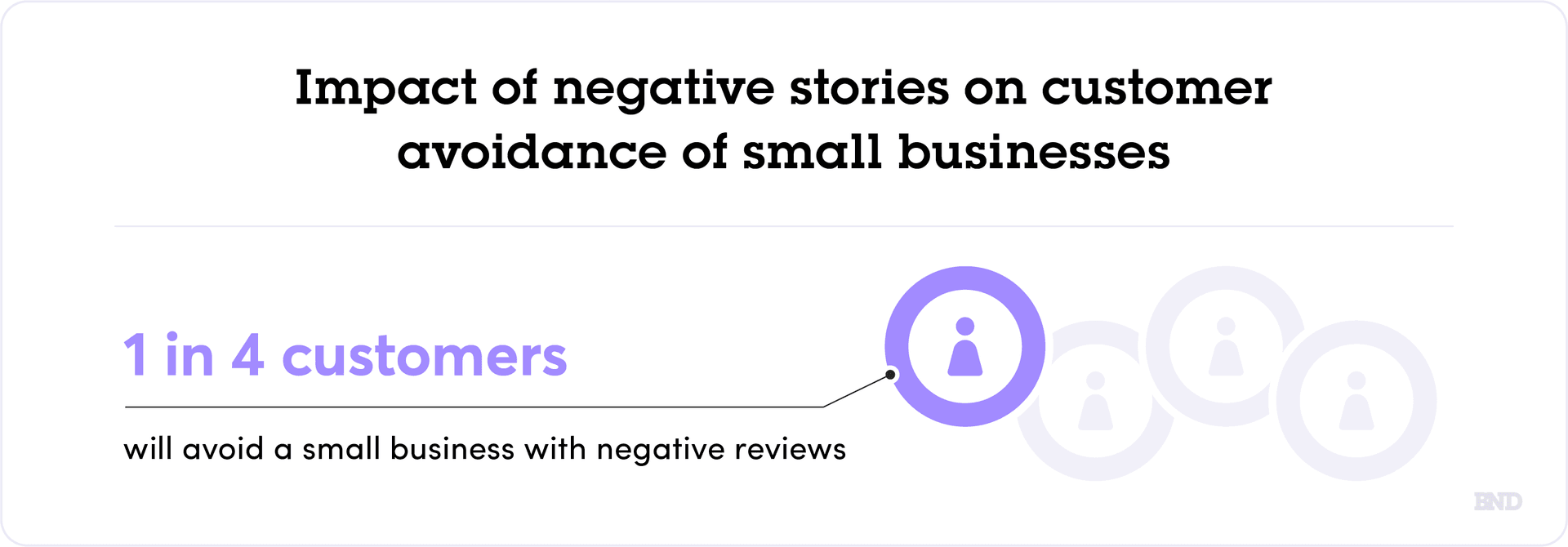
3. Seventeen percent of people who participated in Amazon Prime Day in 2020 learned about it from word-of-mouth advertising rather than from Amazon itself.

4. Millennials are 38 percent more likely to cite word-of-mouth advertising as the way they discovered a company.
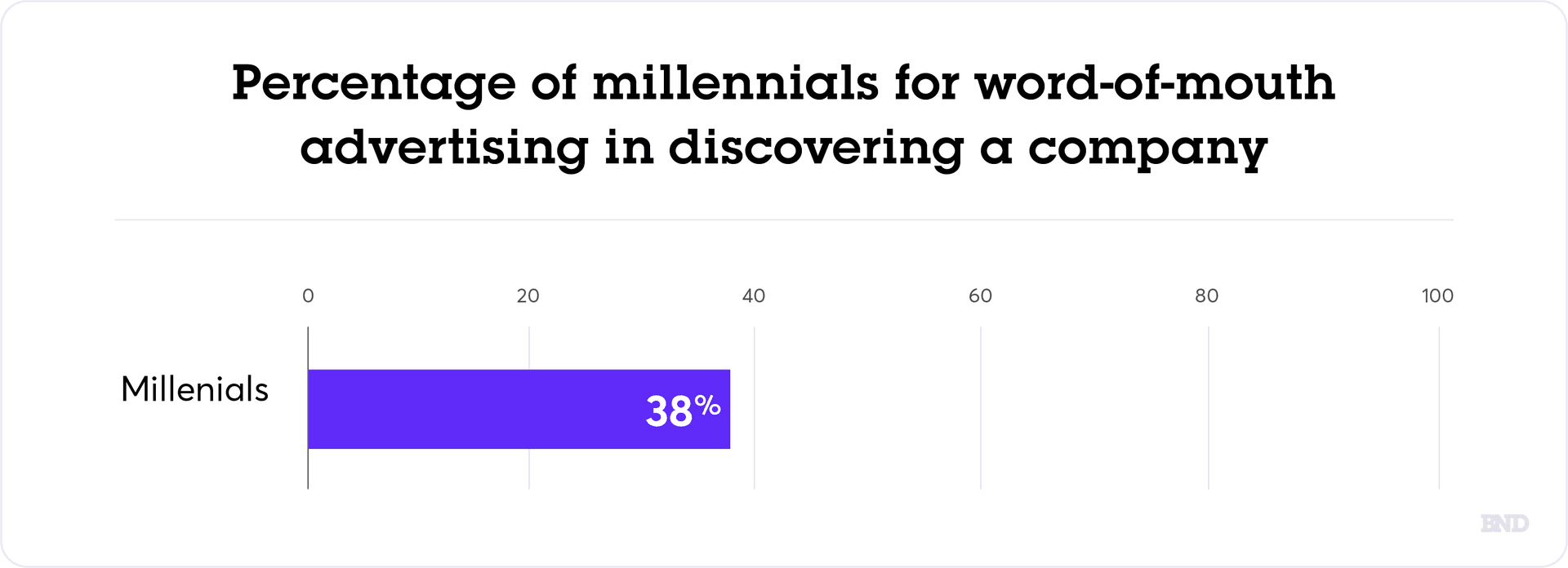
5. Eighteen percent of Gen X and sixteen percent of baby boomer customers regularly use word of mouth to find new products.
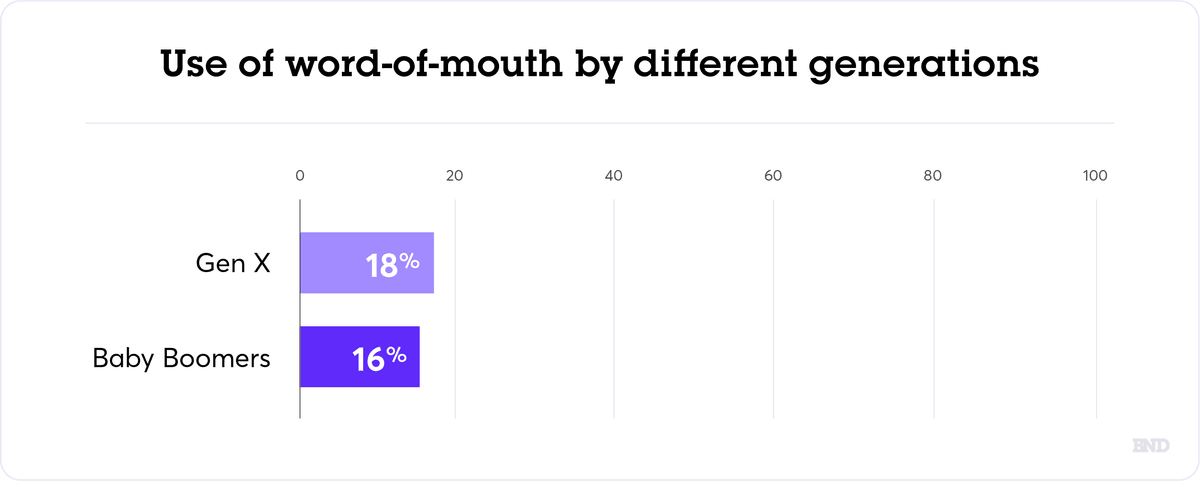
6. With a corresponding figure of 12 percent, Gen Z uses word of mouth to find new products less than older generations do.
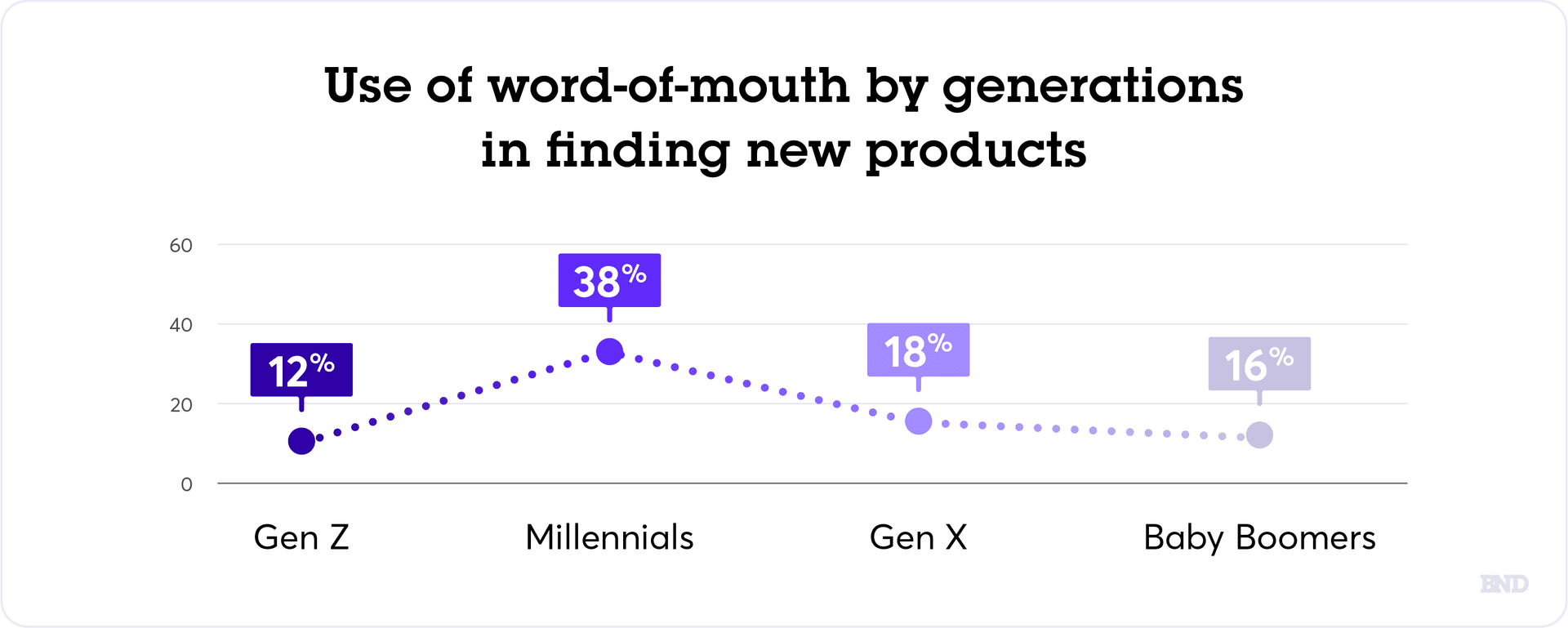
7. Twenty percent of North Americans who learn about a product via word-of-mouth advertising instantly buy it.
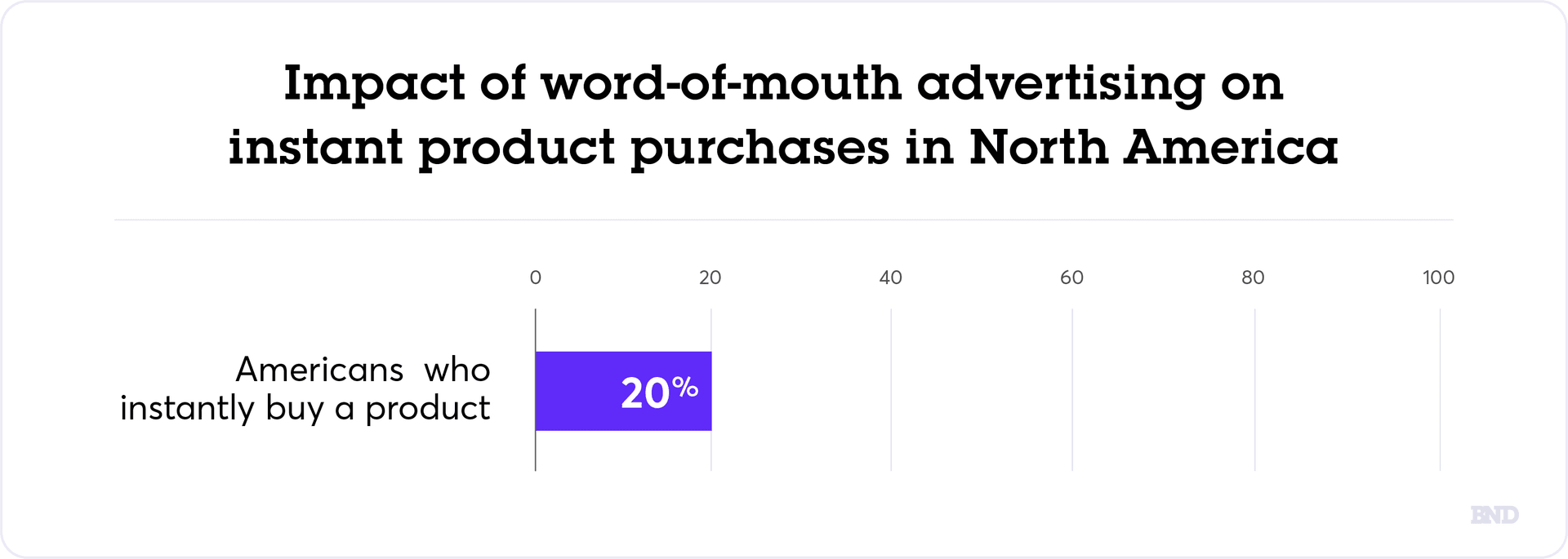
8. Word of mouth may be directly responsible for 9 in every 10 purchases.

9. Word of mouth can generate up to five times as many sales as paid ads.
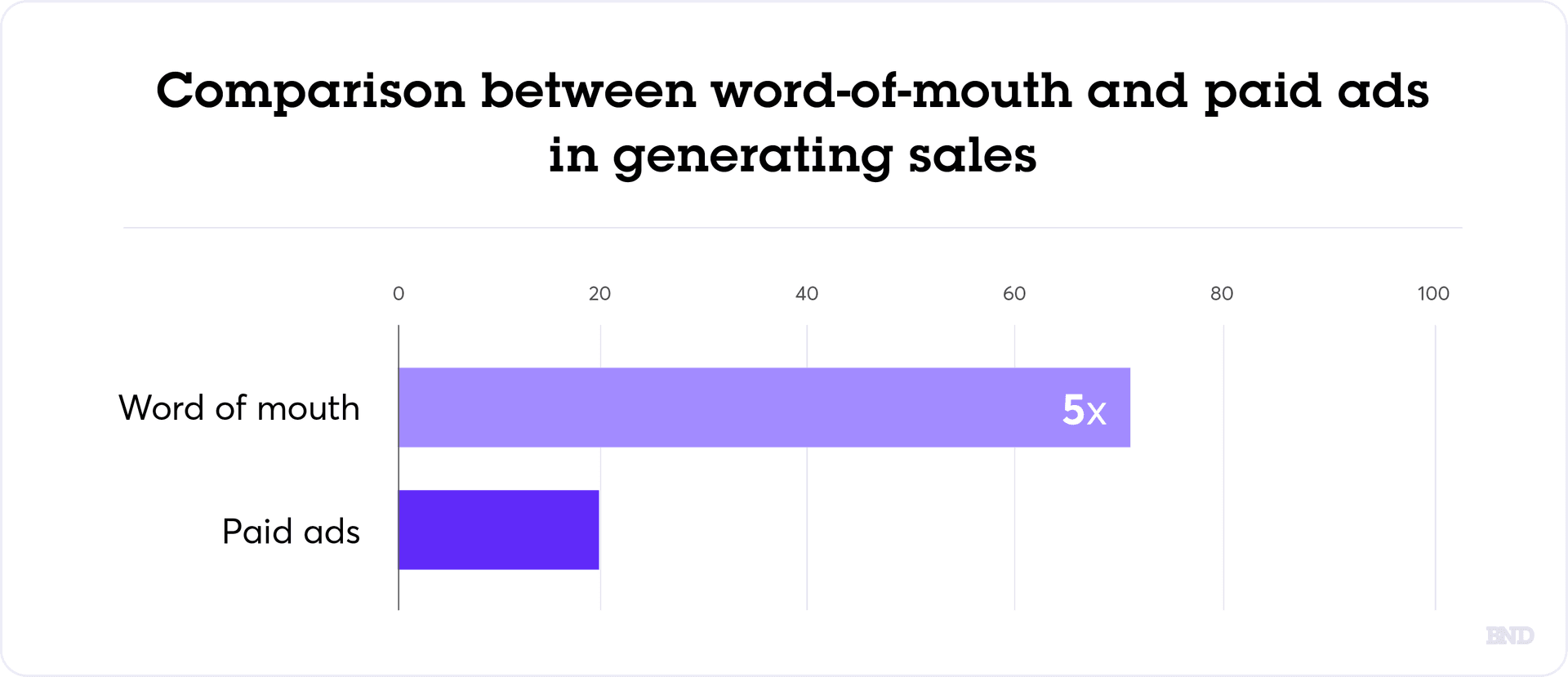
10. Sixty-four percent of marketers say they find word-of-mouth advertising more effective than other tactics.
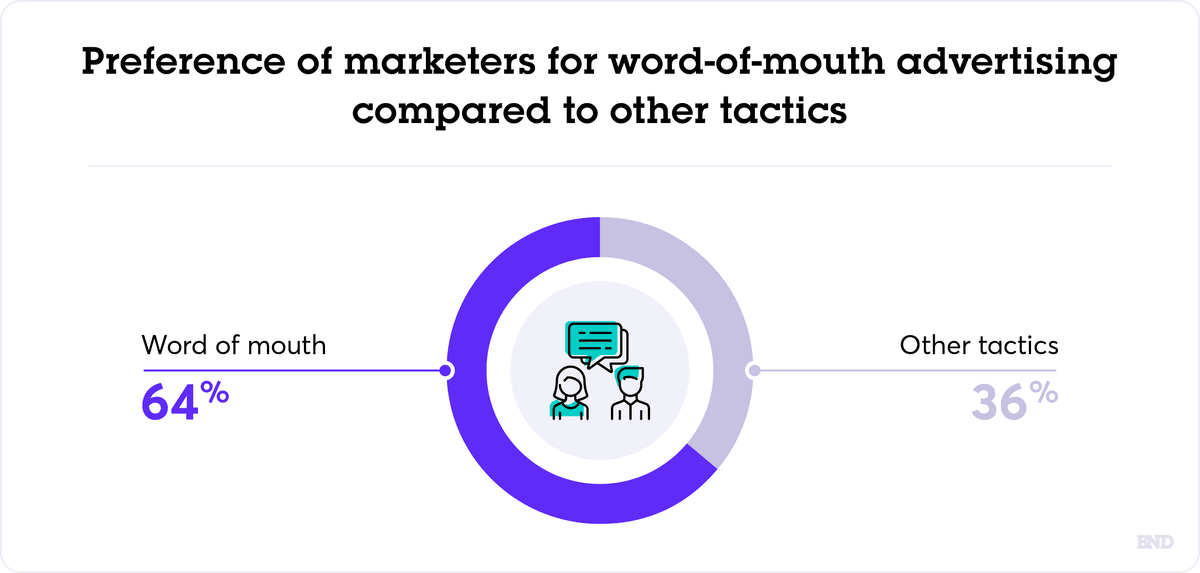
How to improve your word-of-mouth advertising
The potential of word-of-mouth advertising to bolster your bottom line is clear. But how exactly do you advertise via word of mouth? Here are some key tips to follow:
- Incorporate user-generated content. If you’ve ever seen someone post about a brand and tag it on social media, you’ve seen user-generated content. This content, though it reaches a relatively small audience, costs nothing for your company to make and comes with clear creator incentives. Plus, the small number of people that follow ordinary folks probably know them in real life and trust their recommendations.
- Try influencer marketing. By definition, influencers have followers who trust them deeply. When these influencers recommend a product (typically through sponsored content), they’re partaking in word-of-mouth advertising. You might see an uptick in engagement from their fans.
- Highlight your best reviews. Most website design platforms allow you to add a widget that displays your reviews from listing sites such as Trustpilot and Google Maps. This approach is a highly effective word-of-mouth advertising tactic for business-to-consumer (B2C) companies. Business-to-business (B2B) companies often fare better with client testimonials highlighted on their homepage or a separate testimonials page.
- Establish a referral program. Through referral programs, you give your customers an incentive to promote you. Whenever they acquire a new customer for you, they get a discount or reward, and you get a new customer through word-of-mouth advertising. Truly, everyone wins.
Don’t underestimate the power of word of mouth recommendations
When people hear a recommendation from friends and family, they’re very likely to believe them. That’s not necessarily true for advertisements and marketing material. So, while your marketing plan remains important, there’s nothing quite like getting a satisfied customer to spread the word to others. By following the tips in this guide, you can increase the chances they do just that and help attract new customers to your business.
Tejas Vemparala and David Mielach contributed to this article.













